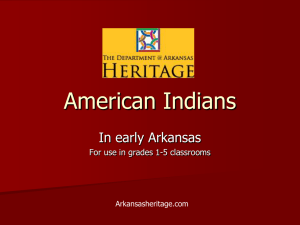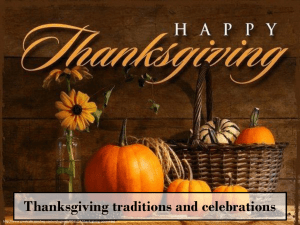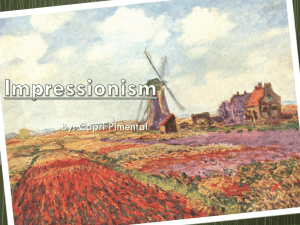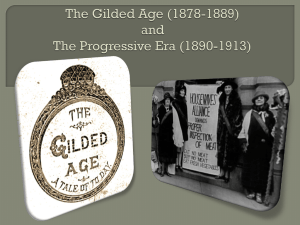DivGrps Proj_sample1 - Middletown High School
advertisement
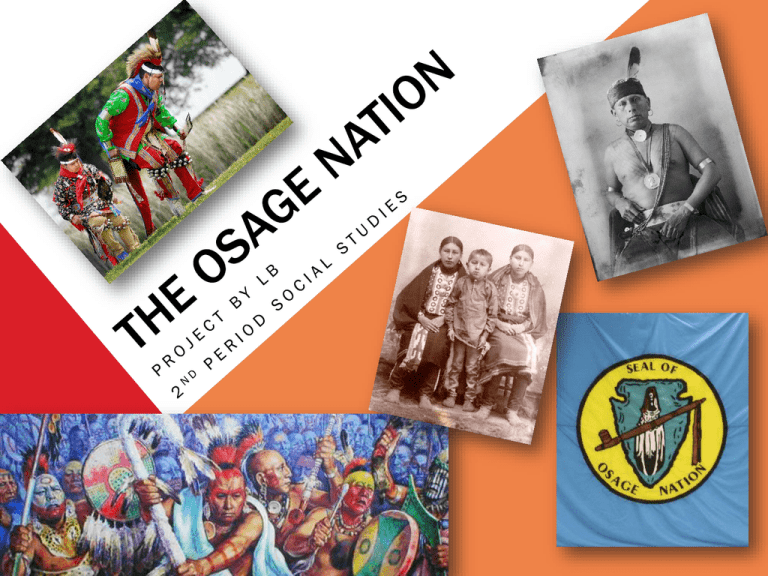
19TH CENTURY PAINTER GEORGE CATLIN DESCRIBED THE OSAGE AS AN “UNCOMMONLY FIERCE, COURAGEOUS [AND] WARLIKE NATION.” …WHILE AUTHOR WASHINGTON IRVING DESCRIBED THEM AS “THE FINEST LOOKING INDIANS I HAVE EVER SEEN IN THE WEST.” CULTURE • • • The term “Osage” means “the Little Ones” or “Children of the Waters” Traditional Osage culture followed through with typical Plains Indians’ beliefs concerning village-based farming and nomadic bison hunting. The Osage also hunted smaller animals like deer, bear and elk along with farming corn, squash, and beans and gathering wild nuts and berries. The Osage were a part of the large Siouan-speaking group called the Dhegiha with other Plains tribes like the Kansa, Omaha, Ponca, and Quapaw. The Siouan language is very huge and different in each branch so it was rare for the Osage to understand other Siouanspeaking tribes. Sign language was often used to communicate in trade and affairs with other tribes. LOCATION • The tribe originated in the Ohio River Valley in present day Kentucky, with their neighbors being the Kansa, Quapaw, Panca, and Omaha tribes. • In 1802, American explorers Meriwether Lewis and William Clark identified three variations of the Osage tribe; the Great Osage resided on the Osage River; the Little Osage lived farther up that same river; and the Arkansas band which settled on the Vermilion River. The Little Osage later became the main Osage people. • The Osage remained in villages on the Osage River until the early 19th century. They currently reside in an Oklahoma reservation. POPULATION • During the early 1600s, about 17,000 Osage tribe members existed. Over the course of the next two centuries, that number declined to 12,000. Tragedy struck in the later 1800s when smallpox drastically depleted the tribal population. By 2011, over 13,000 people remained members of the Osage Nation but only half of them lived in the official Oklahoma tribal reserve and even fewer were full-blood Osage. • At the time of European contact, many of the Osage intermarried with Europeans, forcing certain religious ceremonies to be abandoned due to the high number of new mixed marriages. The line that had once defined religious tradition had been blurred, resulting in spiritual confusion that left the Osage more open to Christian missionaries with some members going as far as converting to Christianity. HOUSING The Osage typically lived in longhouses covered in animal skins and mats. These houses measured up to 100 feet long and were constructed of trees driven into the ground, bent over the house and tied at the top. This framework was covered in hides with smokeholes remaining open at the top, allowing fires to be safely burned inside. Houses were arranged in settled village communities. Buffalohide teepees were utilized during the hunting season. ECONOMY The Osage economy was fixed on farming, hunting, and trading. Men hunted bison, bear, elk, and deer while berries and nuts were gathered by women. The farms produced corn, squash, and beans. Trade with the French and Spanish brought in new goods that the Osage didn’t have access to previously. THE OSAGE CLASH WITH THE IROQUOIS • TIME PERIOD : Pre-1600s • BETWEEN : The Osage & the Iroquois • CAUSE : Initially, the Iroquois and Osage were neighbors in the Ohio River Valley. After a while of sharing the same area, each tribe wanted a more defined property. • EFFECT : Both tribes were very hostile when tensions between the two rose over hunting grounds. Cultures clashed, resulting in war. After years of violent war with invading Iroquois, the Osage migrated away from the “dark and bloody” Kentucky. THE OZARK PLATEAU NATIVE AMERICANS SEPARATE • TIME PERIOD : Early 1600s • BETWEEN : The Osage & other Native American tribes • CAUSE : Migration caused the original five Dhegiha groups to slowly separate due to climate while each group became more culturally distinguished. (No records were kept as of the final reasoning of why the large Dhegiha groups parted, but it can be believed that their uncommon beliefs and newfound tribal individualism had something to do with it) • EFFECT : The Osage remained in villages on the Osage River. In order to achieve items unavailable to them, the Osage often led raids on other tribes to gather materials for survival. One of the most vital developments in society was the adoption of horses into their tribe by invading other Native Americans. They eventually defeated the nearby Caddo tribe, proving their dominance in the plains area, which they controlled for over 150 years. TRADING BEGINS WITH THE FRENCH • TIME PERIOD : 1693 • BETWEEN : The Osage & the French • CAUSE : The first French contact came in the 1670s when two explorers were heading south from Canada to find new partners in business. They stumbled upon the Osage and aligned with them. • EFFECT : This alliance blended the Osage’s warrior experiences with the French’s strong economy and power. The friendly relations with the Osage brought French fur-traders to extend their businesses. Fur trading was a booming business at the time and the Osage traded skins and meat for fur among many other French items like weapons, animals and tools. Once the Osage gained guns and horses from French and Spanish settlers, they no longer heavily relied on farming for survival. Their newfound weapons made hunting bison much easier. Upon first contact, the Osage were star tled by the French settlers and their appearance. They noticed their prominent eyebrows and strong scent. Osage author John Joseph Matthews wrote, “The Heavy Eyebrows with their dried sweat and armpit odors made some of the Little Ones sick.” TRIBAL RELOCATION • TIME PERIOD : 1750 – 1825 • BETWEEN : The Osage & American Pioneers/Settlers • CAUSE : Soon, the peacefulness of the East came to a gradual decline. The new concept of American expansion shook Native Americans all over the country. New American society focused on expansion, immigration, and economy and not the needs of the Natives. The government was attempting to assimilate the Natives. • EFFECT : The Osage were forced to migrate west, slowly traveling about a hundred miles every ten years. In the latter 1700s, the Osage were pushed even farther west by American pioneers who wanted less to do with them. By 1825, they had settled on a reserve in southern Kansas. There, they refused modern American culture, disbelieving in their unconditional ways that contradicted the tribes’ beliefs. They continued to dress in tribal garb and build traditional longhouses. TRIBAL RELOCATION CONT. • In 1833, land was once again a cause of violence. The Osage clashed with the Kiowa near the Wichita Mountains in an event known as the “Cutthroat Gap Massacre” in which the Osage cut off the heads of their victims and arranged them in rows of brass buckets. Not a single Osage died in this attack. • In 1871, the tribe relocated to Pawhuska, Oklahoma due to pressure after the Civil War on the Native American lands to be moved for new settlers. They were given six months to relocate from their four million acre reserve to the new twelve million acre Oklahoma reservation named after Osage Chief, Paw-Hiu-Skah, which meant “White Hair.” OIL DISCOVERY • TIME PERIOD : 1897 • BETWEEN : The Osage & Congress • CAUSE : The US government had rushed to sort out an arrangement for moving Native American settlements farther for the convenience of the growing American population. They narrowed the choice for the Osage down to an Oklahoma reserve, unknowing that oil was underneath the promised lands. • EFFECT : When oil was discovered on their reserve in, they became among the wealthiest in the world. This discovery made the United States government decide that all mineral rights on the reservation belonged solely to the tribe, granting the Osage royalties. Amidst the wealth came tragedy and tribal conflict but it also helped them maintain their strong sense of pride in their culture and community. By 1906, the Osage had made it big. OSAGE REIGN OF TERROR • TIME PERIOD : Early 1920s • BETWEEN : The Osage & Americans • CAUSE : Due to the recent oil discovery, Congress gave each tribe member land and required members to a court-given guardian – normally white lawyers or businessmen – to oversee the land safely in law. Both the member and the guardian received royalties/headrights [or yearly payments] for the land. Many Americans became envious of the recent Osage wealth and set out to get a part. • EFFECT : Such wealth attracted criminal intent. Mysteriously, an estimated 60 Osage people died of suspicious causes. The series of murders in the reserve caused tribal elders to contact the FBI to investigate. A few greedy white men were to blame. The event resulted in legislative laws protecting the Osage and their oil rights. CURRENT LIFE • • • Tribal life remained until the late 1800s when traditions modernized to fit in with mainstream society. Beliefs have wavered slightly since the original Osage tribe but religion is still a major part of their lifestyles. The tribe, for the most part, still dresses in tribal garb and reside in longhouses. Currently, in addition to profit from oil, the tribe’s reservation economy is based on ranching, farming, and casinos. The Osage are still among the wealthiest Native American nations in the United States. In 2006, the Osage Nation created an official congress unlike previous efforts. Along with the constitution published in 1881, it is loosely modeled after that of the US government. Bibliography "Osage." Encyclopædia Britannica. Encyclopædia Britannica Online School Edition. Encyclopædia Britannica, Inc., 2012. Web. 11 Oct. 2012. <http://www.school.eb.com/eb/article-9057513>. "Pawhuska." Encyclopædia Britannica. Encyclopædia Britannica Online School Edition. Encyclopædia Britannica, Inc., 2012. Web. 11 Oct. 2012. <http://www.school.eb.com/eb/article-9058819>. "Osage." U*X*L Encyclopedia of Native American Tribes. Ed. Laurie J. Edwards. 3rd ed. Vol. 2: Southeast, Great Plains. Detroit: U*X*L, 2012. 833-852. Gale Student Resources In Context. Web. 9 Oct. 2012. Document URL: http://ic.galegroup.com/ic/suic/ReferenceDetailsPage/ReferenceDetailsWindow?failOverType=&query=&pro dId=SUIC&windowstate=normal&contentModules=&mode=view&displayGroupName=Reference&limiter=&cu rrPage=&disableHighlighting=false&source=&sortBy=&displayGroups=&action=e&catId=&activityType=&sca nId=&documentId=GALE%7CCX4019400062&userGroupName=dove10524&jsid=25b785e3836b539735e 1ded3eda8f214 Gale Document Number: GALE|CX4019400062 Johnson, Michael. The Native Tribes of North America. "Plains and Praires." Osage. Pages 81-82. 1st Edition. New York: Macmillan Publishing Company, 1994. Print. "OSAGE." Oklahoma Historical Societ'ys Encyclopedia of Oklahoma History & Culture. Oklahoma Historical Society, n. d. Web. Web. 11 Oct. 2012. <http://digital.library.okstate.edu/encyclopedia/entries/O/OS001.html>. THANKS TO… http://www.osagetribe.com/ Bibliography CONT. IMAGES USED: http://www.osagetribe.com/uploads/IMG_7098.jpg http://osagevision.org/wp-content/uploads/2010/02/jfeat11.jpg http://www.firstpeople.us/photographs/pt/Bacon-Rind-Osage-1900.jpg http://i.usatoday.net/news/gallery/day/migrated-media/10dance_n070430.jpg http://www.nysm.nysed.gov/IroquoisVillage/images/figure1longhouselg.gif http://1.bp.blogspot.com/_qLAIskTQXUc/THfYzI2T7RI/AAAAAAAACaA/zir3b_RqKzE/s1600/native+american+farming.jpg http://www.osagetribe.com/uploads/OBOWarrior.jpg http://2.bp.blogspot.com/_ptAqeqIdoX0/TEIzHNF9cvI/AAAAAAAACP0/idWTMcNaLxQ/s640/Osage+Nation+Civil+War+Vets+%28%236-Black+Dog,+Confederate+Officer+Vet+of+Pea+Ridge+and+other+battles%29+%28ca.+1870%29.jpg http://upload.wikimedia.org/wikipedia/commons/0/02/Osage_nation_seal.gif http://upload.wikimedia.org/wikipedia/commons/thumb/a/ae/Map_of_Traditional_Osage_Tribal_Lands_by_Late_17th_Century.jpg/300p x-Map_of_Traditional_Osage_Tribal_Lands_by_Late_17th_Century.jpg http://www.legendsofamerica.com/photos-oldwest/IndianWar.jpg http://arkarcheology.uark.edu/indiansofarkansas/images/AIH_osageTraders.jpg http://4.bp.blogspot.com/_CAoFDpupTaY/SWCMHt6r76I/AAAAAAAABbs/PLdPHZkz2_o/s400/HALE+and+ANNA+BROWN.jpg Oil pictures provided by “CLIPART” by Microsoft http://www.cowansauctions.com/itemImages/p4733.jpg http://arkarcheology.uark.edu/indiansofarkansas/images/AIH_osageTraders.jpg http://redeagleconcepts.com/images/eddy_mag_yg8w.gif http://kotv.images.worldnow.com/images/14982115_BG1.jpg http://upload.wikimedia.org/wikipedia/commons/thumb/e/e1/GeorgeCatlinByFisk.jpg/220px-GeorgeCatlinByFisk.jpg http://upload.wikimedia.org/wikipedia/commons/thumb/c/c5/Portrait_of_Washington_Irving_attr._to_Charles_Robert_Leslie.jpg/220pxPortrait_of_Washington_Irving_attr._to_Charles_Robert_Leslie.jpg http://oak.snr.missouri.edu/forestry/history/osagebig.jpg http://www.co.dakota.mn.us/NR/rdonlyres/A891C278-6FED-416F-B931-0CAE56DB08B8/2024/MilespropertyVermillionRiver.JPG http://s3.amazonaws.com/loa.images/inv/1054391/1054391-120213111021844-p.jpg http://www.indiana.edu/~mathers/wanamaker/images/1962-08-4136.jpg http://votingosage.org/wp-content/uploads/2010/04/osageflag.jpg http://www.topozone.com/map_get.asp?z=14&e=737667.084664876&n=4061660.73478104 http://www.arts.ok.gov/p/capitol_collection/paintings/vaupel/elk.jpg http://www.californiaindianeducation.org/famous_indians/maria_tallchief/Fairfax_Oil_Field.jpg http://nativescience.files.wordpress.com/2010/12/osages-national-cowboy-museum1.jpg

